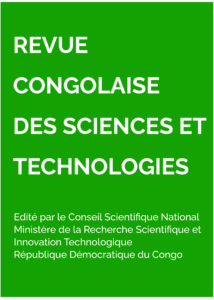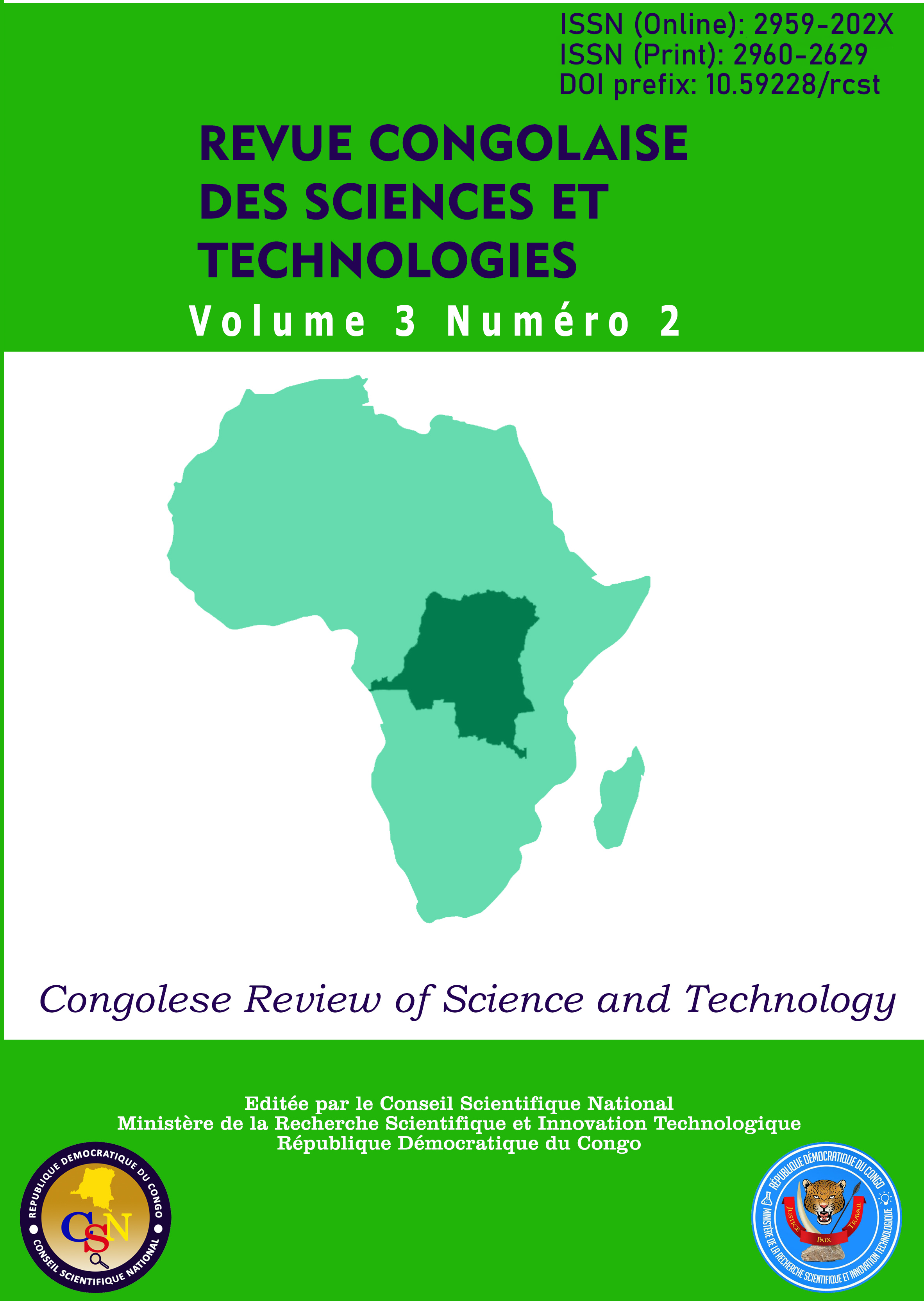Prospect of lasting peace in non international conflict eastern Democratic Republic of Congo: choice between the military option and the diplomatic option towards the rebels of the May 23 movement
Main Article Content
Abstract
The Democratic Republic of Congo does not need expertise of a any foreign army, and especially neighboring countries to
bring peace and securty in its national territory; especially to neutralize the rebels of the May 23 movemengt. All it lacks is
the political will for which we will not stop pleading for the purpose of guaranteeing our armed forces the best living and
working conditions.It has an army made up of real daughters and sons, well organized and dedicated to the defense of the
country, until the supreme sacrifice and the definitive return of peace. To achieve this, our army requires only one thing: the
necessary equipment and decent traiment.Somme of these armed self-defense groups are ready to surrender and lay down
their arms, provided that a good policy of disarmament, demobilization and reitegration is applied to them and that their
elements are taken care of in a holistic manner. And this work does not require the presence of foreign armies on Congolese
soil, on the contrary a national consciousness focused on lasting peace by favoring Democracy, good governance and the rule
of law in the true sense of the term.
Article Details

This work is licensed under a Creative Commons Attribution-NonCommercial-ShareAlike 4.0 International License.
References
Ahanhanzo, G. (1986). Introduction à l’organisation
de l’unité africaine et aux organisations
regionales africaines, Paris, Librairie Générale
de droit et de jurisprudence.
Alland, D. (2014). Manuel de droit international
public, Paris, PUF.
Audoin, R., (1914-1918). La guerre des enfants,
Paris, éd Armand Colin.
Charte de l’ONU relative aux droits et obligations
des Etats membres, conclu à San Francisco, le
juin 1945, approuvée pour adhésion, le 29
septembre 1960 par le décret-loi
constitutionnel relatif à l’exerce des pouvoirs
législatifs et exécutif à l’échelon central du 29
septembre 1960, J.O.R.D.C., n°12 colonne 55,
er octobre 1960, p.13.
Greminger, M. (2007). Médiation et facilitation dans
les processus de la paix, Zurich, Ed Mason et
Siegfried.
Jacquemot, P. (2009). L’économie politique des
conflits en RDC. Paris, Ed cairn pro.
Kobanda, J.P. (2006). Les crimes économiques dans
les grands lacs africains. Paris, Ed. Menaibuc.
Loi n°11/002 du 20 janvier 2011, modifiant et
complétant la Constitution de la République
Démocratique du Congo du 18 Février 2006,
J.O.R.D.C., n° spécial, 52ème année, 5 février
ONU. (1949). Les 4 conventions de Genève.
Consultées le 10 aout 2023.
ONU. (2002). l’exploitation illégale des ressources
naturelles et autres formes de richesse de la
République Démocratique du Congo. Consulté
le 30 aout 2023.
Https://www.droitcongolais.info
ONU. (1994). les Interamwe. Consulté le 31 aout
https://www. un.org
ONU. (2013). Lutte contre les groups armés. Consulté le
/06/2024. https://monusco.unmissions.org
ONU. (2014). les avancées des obstacles dans la
lutte contre l’impunité des violences sexuelles
en RDC. Consulté le 03 septembre 2023.
https://www.monusco.unmissions.org
Ruzamira, E. (2015). La dynamique des conflits
ethniques au Nord-Kivu: une réflexion
prospective. Bukavu, Ed grand lacs.
Amnesty International. (2001). Dans l’ Est de la
RDC sous contrôle rwandais: un désastre
humain. Consulté le 20 aout 2023, sur

